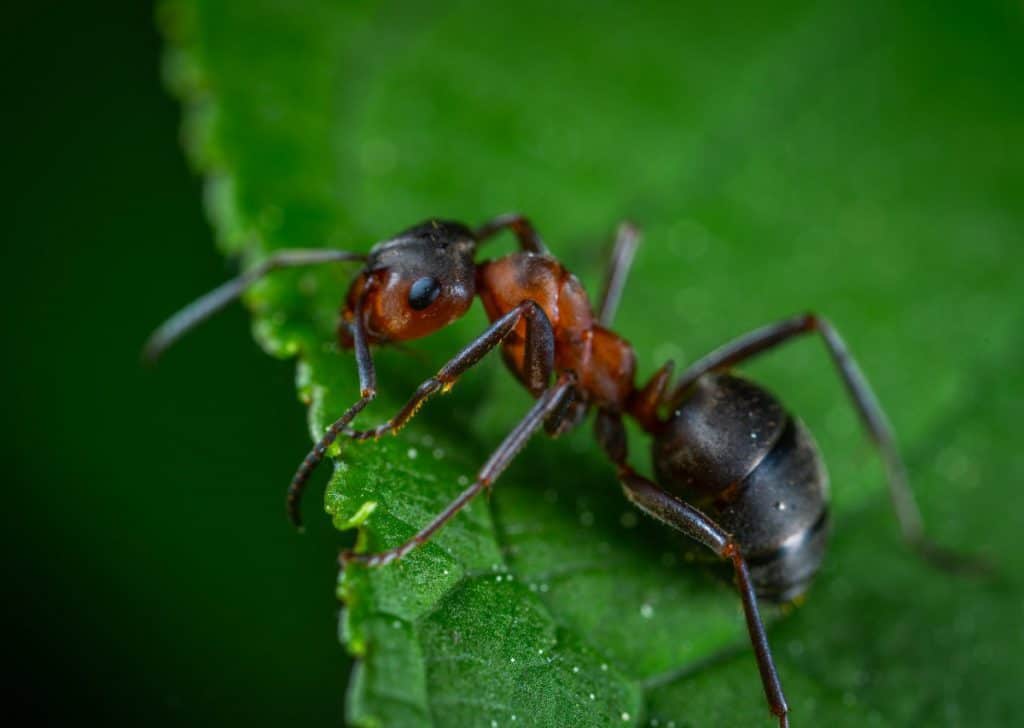
What Can Ants Bite and Chew Through?
Ants, these small critters are the stuff of nightmares for some. I can’t say that I blame them because a few movies did cast ants to be the monster in them. Ants are considered to be pests and can be very troublesome if they start to nest in your home. Most species love to invade your pantry or scrounge up those crumbs that fell from your food. Any sweet, savory and greasy food that is left out in the open is fair game for these little critters. However, their mandibles are not just limited to just biting or tearing off food chunks, they have other uses too.
Just what can ants bite and chew through? Ants use their mandibles to chew through different materials such as wood, concrete, plastic, silicone, and cotton so that they can build those intricate tunnels and pathways that connect the chambers of their nests or get to the food source they need.
Mandibles are a pair of appendages near an insect’s mouth… they are used to grasp, crush or cut the insect’s food, or to defend against predators or rivals.
Just a little trivia for you to digest; the fear of ants specifically is a condition that is called myrmecophobia. Most people who have this phobia would also have fear for any type of insects and this condition is called entomophobia. Now, the reason why ants became the monsters in some movies may have something to do with those fears and the fact that ants can chew through different materials. We’ll be looking closely at materials that ants, apparently can gnaw their way through. Determined little critters they are indeed.
If you enjoy reading this article, why not check out our articles on What Can Ants Climb? This surprised me! and Where Do Ants Live In Winter?
Wood
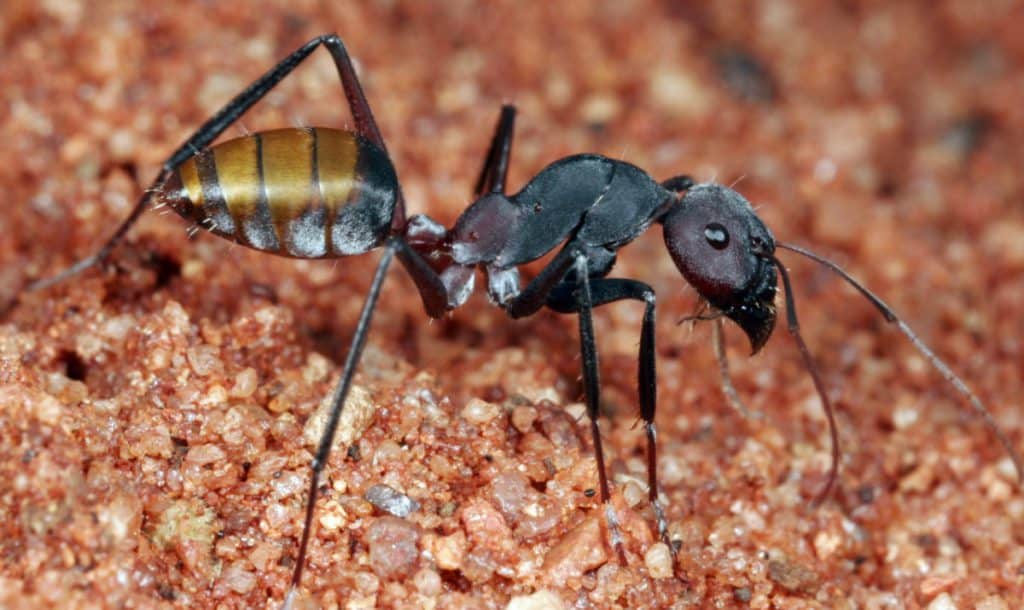
The main ant species that first come into mind when the wood is being mentioned is the carpenter ants. They have the habit of creating nests in rotting wood and sometimes they can create their nest inside your wood walls or wood foundation. But don’t be fooled, carpenter ants do not eat wood as they create their nest, they only excavate them. It’s the termites that dine on wood. However, both insects can cause major damage to the wood if left untreated.
If you have spotted these carpenter ants constantly crawling on your countertops then there is a good chance that there is a nest nearby. Wikipedia mentioned that carpenter ants make satellite nests away from the mother nest. Check any wooden parts in your house including your furniture for these satellite nests. To learn more about how ants may damage wood and other materials in your home, check out What Can Ants Damage? What you didn’t know.
Plastic
In my experience, thin plastic packaging of food is no match to the will power of ants. I even had the experience of opening up a packet of instant ramen and finding ants crawling inside. These ants that I saw are tiny and red in color. So if you have thin plastic packaging for your food, it is best to keep it in an airtight container or inside the fridge. My mom usually sticks our bread inside the fridge because she says that ants can get in even if she seals the plastic up with clips.
Others have said the same, forum posts regarding what ants can chew through can be seen online. A few mentioned that even the sturdy chips bag is not safe from their mandibles. The same forum where I read about the chips bag mentioned a few DIY solutions to deter ants. Coffee grounds, peppermint essential oil, and lemon juice are the top pantry items you can use to prevent ants from wandering near your food.
Pharmaceutical companies have had problems with ants chewing through the plastic packaging of their meds and therefore have to recall millions of dollars’ worth of medicines because of this. The specific species that have caused this problem is named Monomorium Destructor. It is very common in hot climates and tropical regions. The same species have been reported to cause car ignition malfunction and house fires, as they also chew through electrical insulations. I guess everyone should beware of these plastic-eating ants.
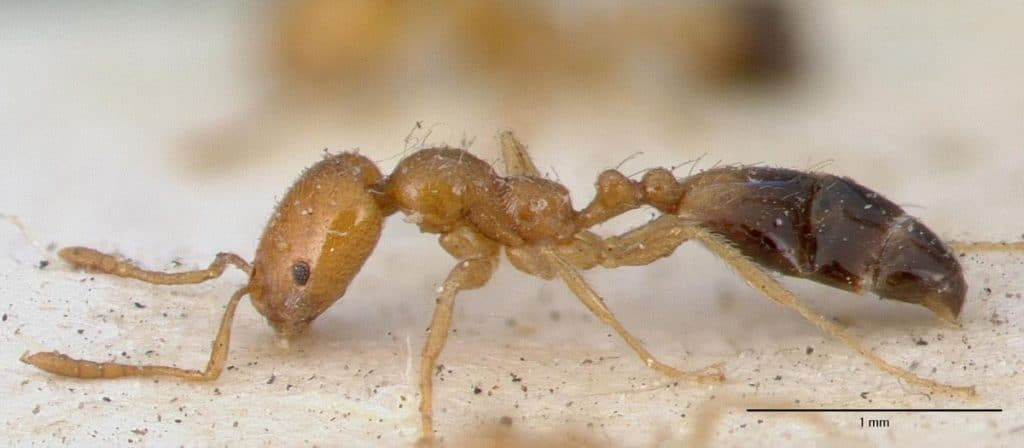
April Nobile / © AntWeb.org / CC BY-SA 3.0
Concrete
Apparently, ants can chew through concrete too. An expert in pest control explained the reason why ants would nest inside wall panels or in concrete. He said that it may be because of a few reasons; the concrete might hold the right amount of moisture for optimal nesting conditions or that the cement mixture might have an ingredient or nutrient that the ants find appealing.
Whatever the reasons may be, you’ll easily spot ants invading your concrete areas when you find piles of concrete powder on the floor. Just like carpenter ants, species of ants that nest in concrete primarily excavate the material rather than eat it. Unless these ants started a nest beneath your pavement, their nest can be quite difficult to treat. However, there are baits and chemical sprays that can now be used without the need for expert pest control’s help
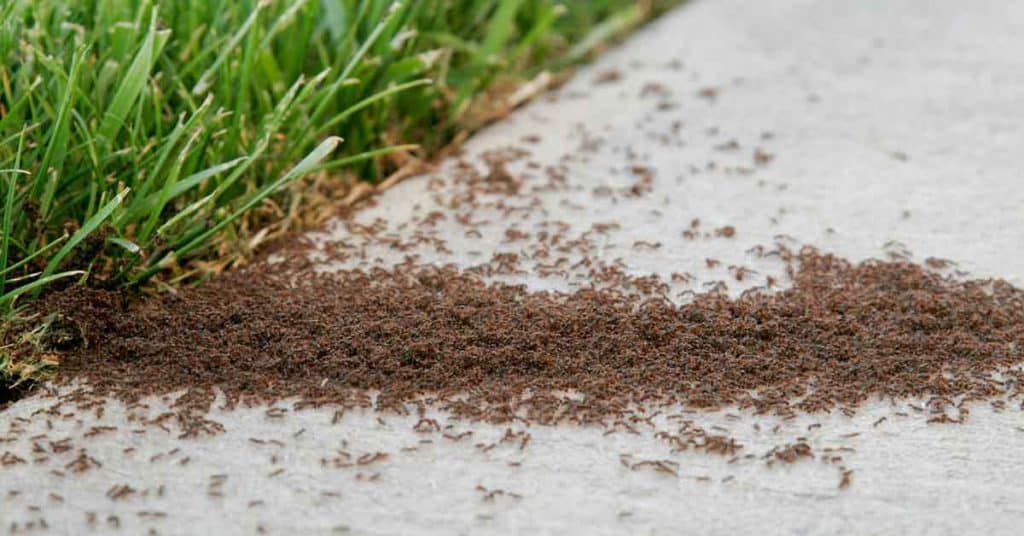
Silicone
A few ant enthusiasts mentioned that there are a few ant species that can chew through silicone. The Solenopsis Invicta, Pogonomyrmex, and Acromyrmex ant species are strong chewers, according to a formiculturist. Formicarium; a box that houses your ant farm and is primarily used to study ant colonies, can be sealed with the use of silicone sealants. The ant keepers who own any of the species mentioned above have seen their ant colonies chew through such sealants.
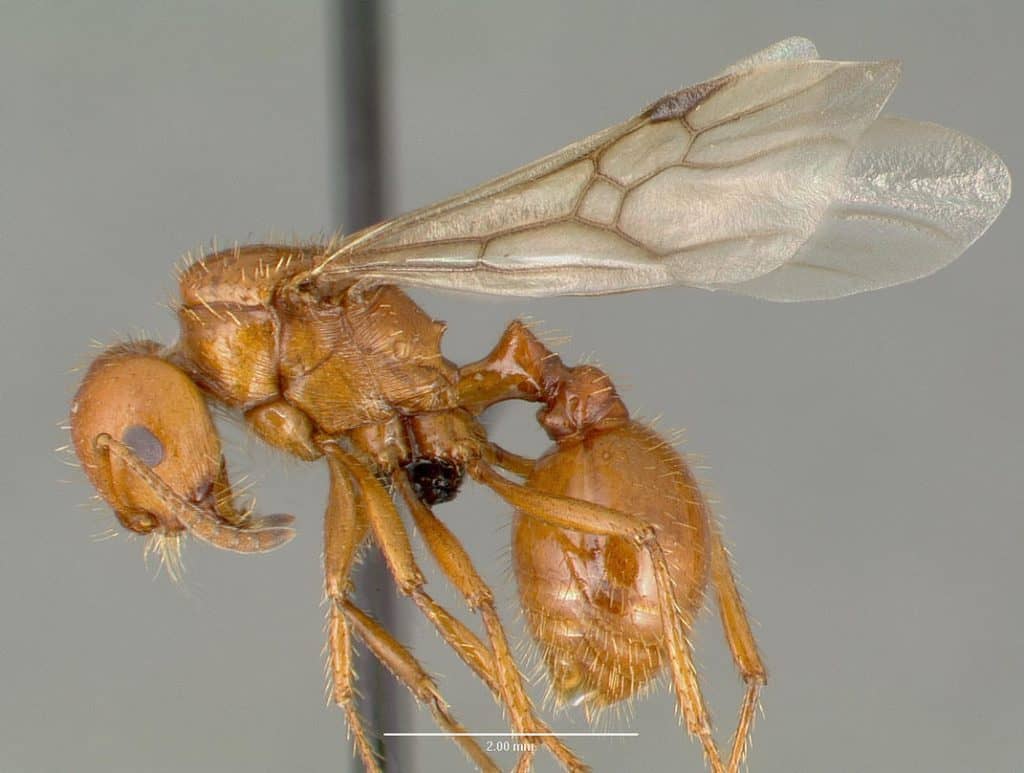
from AntWeb.org / CC BY-SA 3.0
Old school formicaria are made of glass but the modernized versions are now made of acrylic and sometimes 3D printed. There are also some that are made from a material called autoclaved aerated concrete and of course, there are those that are made of plaster. Usually, these boxes are made transparent for better viewing and observation experience.
Caulk
Caulk and sealant are used interchangeably very often. It is because they often are used in the same way. Caulking is used to seal seams, joints or gaps in structures to prevent air, insects, dust, and water from penetrating through. But among the modern uses of caulking is to prevent insect infestation such as the very persistent ants.
A homeowner showed how she uses caulk to plug the holes of the possible ant’s nest located in her kitchen wall. She followed the trail of ants to find where they are coming from. She also mentioned that having a spray bottle with soapy water mixture in it will instantly drown the ants. She swears by this duo but it seems that it is a temporary fix only.
Ants can chew through many materials and caulking is one of them. If their mandibles are able to insert between the gaps then they can literally gnaw their way out of that caulking. Early caulking material is made of fibrous materials that are soaked in tar and then it is hammered into that gap or wedge but the modern versions are made from silicone, polysulfide, polyurethane, and acrylic sealant.
Clothes
An article published on the web back in September of 2019 made a list of 8 insects that can damage or eat a hole in your clothes. One of the said insects is ants and apparently, clothes that are made from cotton are their favorite. Come to think of it, I remember that I have seen them invading my cotton buds a number of times.
According to experts, cotton contains a substance that ants love. The flowers of the cotton shrub excrete a sap when it blooms. This sap is absorbed by the cotton and stays within the fibers even after it is spun, treated and colored. This flower sap contains sugar and it is what attracts ants to cotton clothes and other cotton items.
Walls
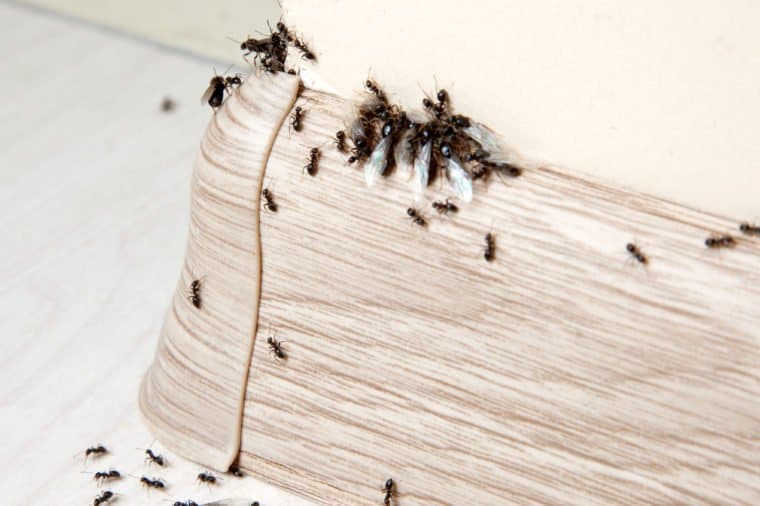
Foraging ants are not really something you should be majorly concerned about. They are only there hunting for food. However, you will need to find a way to deter them so that they don’t nest inside your home. Ants will surely chew through concrete walls, foam insulation, and other materials to build their nest inside. If your home has plenty of food source for the ants, you can expect to find these critters crawling up, down, and across your countertops, floors, and walls.
The reason why ants nest within walls is that a home is usually a place where food can be readily foraged. What most wall nesting ants do is excavate the area where they want to build their nest. Which is why one sure sign of ant invasion is powdered concrete or wood dust near the suspected area. Ants may choose to hibernate in your home over the winter… for more information on how that happens, read Do Ants Hibernate in the Winter? Let’s Find Out.
“Ants will surely chew through concrete walls, foam insulation, and other materials to build their nest inside. “
Grout
This is kind of, already a no brainer to answer. If ants can chew their way through walls, foams, concrete and wood, there is no doubt that they can do that grout too. I’ve read a forum where a homeowner asks how he can prevent the ants from making holes on his kitchen grout. One answered him that if the wedge is located between the counter and backsplash then it should be caulked rather than grouted. However, ants can still chew through caulk especially if it is a silicone-based one.
Wires
Sadly, ants can chew through wires too, specifically electrical wires. I’ve had the very unusual experience of my laptop shorting out because ants were able to get inside my power cable and wreak havoc there. My research also led me to an article where the writer mentioned that ants have caused house fires and electrical shortage of mechanical items.
One species in particular called the crazy ants are notorious when it comes to destroying and invading electrical wires. This species originated from South America and is said to be resilient to the most common pesticides we use to kill bugs. Scary.
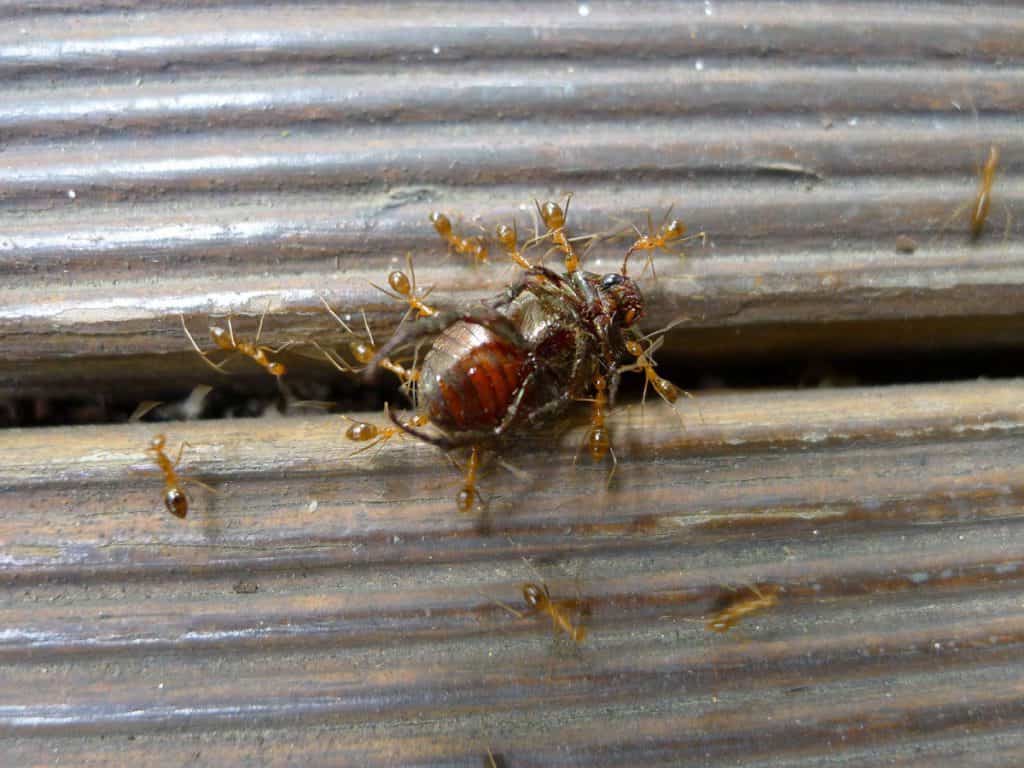
Photo taken by John Tank, https://commons.wikimedia.org/wiki/File:Yellow_crazy_ants_v_beetle_(5698996539).jpg
Expanding Foam
Yes, expanding foam is no different from the other materials mentioned above. Over time ants will chew a hole in the foam and burrow their way inside to create their nest. One video I watched showed 26 mini colonies found inside the foam insulation they sprayed on.
I guess it is really not a long term solution for ant infestation especially if the infestation has already occurred. The best recommendation that pest experts have is for the infestation to be dealt with first before re-insulating the affected area.
Signs That Your Home Is Infested By Ants
First and foremost, you have to determine if the ants you are seeing are just coming inside your house to forage for food or are already inside your home nesting. Here are a few sure signs of an ant infestation in your home.
- If you spot any carpenter ants crawling, that is already a sign itself. Carpenter ants love to create nests in rotting wood but if you don’t have wood at home then they may be nesting inside your walls. One particular homeowner posted a video of carpenter ants taking residence between his walls, inside foam insulation.
- Funny noises coming from your floors and walls. If ants have already infested your home, you’ll hear insect activities if you put your ear flat on the surface where the colony has taken residence.
- Ant trails going in and out of your house. Sometimes they can be located on window sills, or around your door. This is a sure sign that ants are already present and that either a nest is already in place or the invasion is just starting.
- If you have carpenter ants infestation, locating the nest can be tricky but one sure way to find it and also to determine that you have carpenter ants infestation is to look for wood dust around your home. This species of ant excavate wood to create their nests.
Some would prefer to hire professionals to deal with the problem, especially if they want the infestation to be dealt with ASAP, others prefer a more natural approach.
Home-Made Natural Ant Poison
Here is a recipe for an ant poison that can be whipped up with a few ingredients you can find in your household.
What you need:
- ½ C of sugar
- 1 ½ Tbsp of Borax
- 1 ½ C of warm water
- 2 Tbsp Honey or any sweet syrup (optional)
- Jar big enough for the mixture
- Cotton Balls
- Bottle caps or beer caps
Procedure:
- Put the sugar and Borax inside the jar.
- Pour warm water in and close the lid. Shake until everything is dissolved and you have a clear liquid.
- Mix in honey or any sweet syrup you have to add more sweetness and attract ants more. This is optional. You can use the borax, sugar and water mixture by itself if you want to.
- Soak some cotton balls in the mixture and place it on a bottle cap or beer cap.
- Put the soaked cotton balls on the areas that ants frequent or where you see ant trails.
- This is the most important step. You have to resist squishing any ants you see.
The way this solution works is that the ants will be attracted to the sugar in your borax mix. They will drink this solution up and then once they are full, they’ll go back to their nest and proceed in telling other ants in the colony where the food came from. Meanwhile, the borax in the mixture is already doing its job of poisoning the ants. Borax, when digested by ants produces gas and that gas expands the stomach of the ant causing the little critter to pop. Now you know why step number 6 is the most important part.
Now, borax is also something that can make kids and our pets sick. So taking caution when creating, applying and storing this mixture is a must. For those who prefer a mixture that is pet and kid-friendly here is one that I found online. Just like the ant poison above, the ingredients to this mixture can be readily found in your household.
Non-Toxic And Natural DIY Ant Spray
What you need:
- Empty Spray Bottle
- Funnel
- Water
- 2 C Apple Cider Vinegar
- 2 Tbsp Dishwashing Liquid
- 2 Tbsp Baking Soda
Procedure:
All you need to do is put all the ingredients inside the spray bottle. Make sure that you put the vinegar in last because we all know what happens when baking soda and vinegar mix. You also might want to pour it slowly and let the bubbles settle before adding more. Pour in as much water is needed to fill the container and then put the spray nozzle back on. Shake it a little to mix everything up and there you have it, a homemade ant spray.
What you need to do is to spray this solution directly on the ants. It will instantly kill them and then you can use a paper towel to clean up.
Conclusion
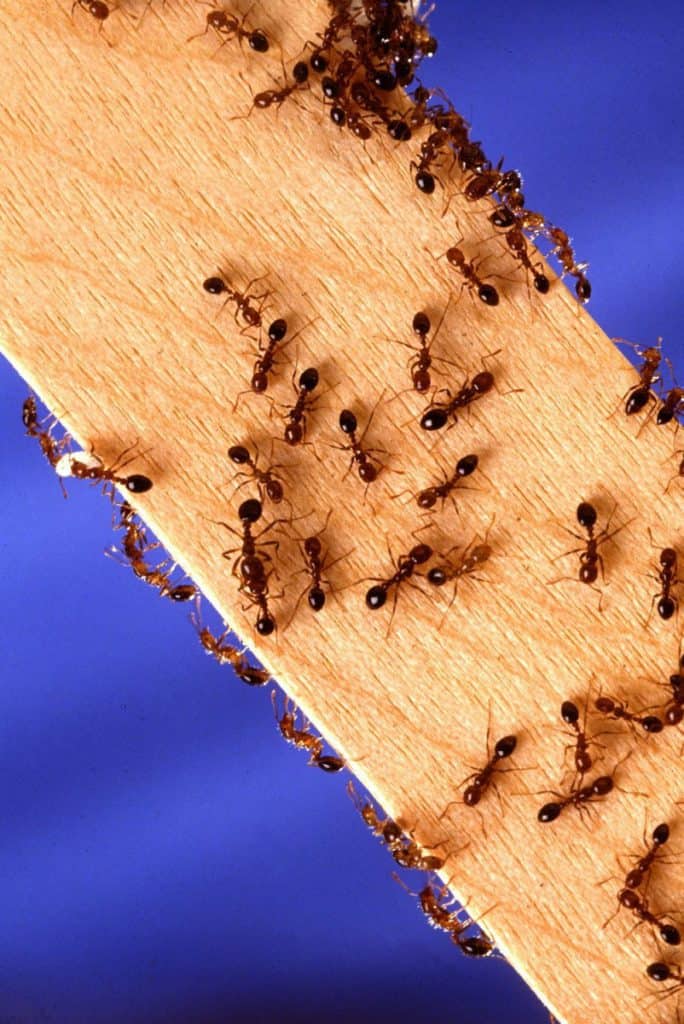
From wood to plastic, silicone, concrete and other materials too, this article has given you an insight on what ants can chew through. And yes, your cotton clothes did make the list. The main thing to remember is that ants are very driven and persistent especially when they are looking for food and nesting grounds. A few species were pinpointed depending on the type of material being talked about. One thing is for sure, ants can eat through all the materials we’ve mentioned above. Now if you’ve spotted signs of infestation or invasion in your home there are two ways to deal with it; call an expert or try any of the two DIY recipes included in this article. What’s important to remember is that ants can become a nuisance so removing them from your home can sometimes be a must. I personally prefer to use natural solutions rather than hiring an exterminator who will use chemicals to deal with the ants.
“Ants are very driven and persistent especially when they are looking for food and nesting grounds.”
If you enjoyed reading this article, why not check out our articles on What Can Ants Damage? What You Didn’t Know and Where Do Ants Live in Winter?
Recent Posts
Tiny Black Bugs in Bathroom NO WINGS: What They Are and What to Do!
Finding tiny black bugs in your bathroom can be uncomfortable, to say the least. Especially if they are persistent, or they appear in very large numbers, which they often like to do. When it...
Tiny Black Bugs in Plant Soil - What Are They & What To Do About It
A short horror story: You get a new houseplant. You do your best to take care of it. You’ve ensured that it has the right soil, the right amount of sun, it gets enough water. And then one day, you...

